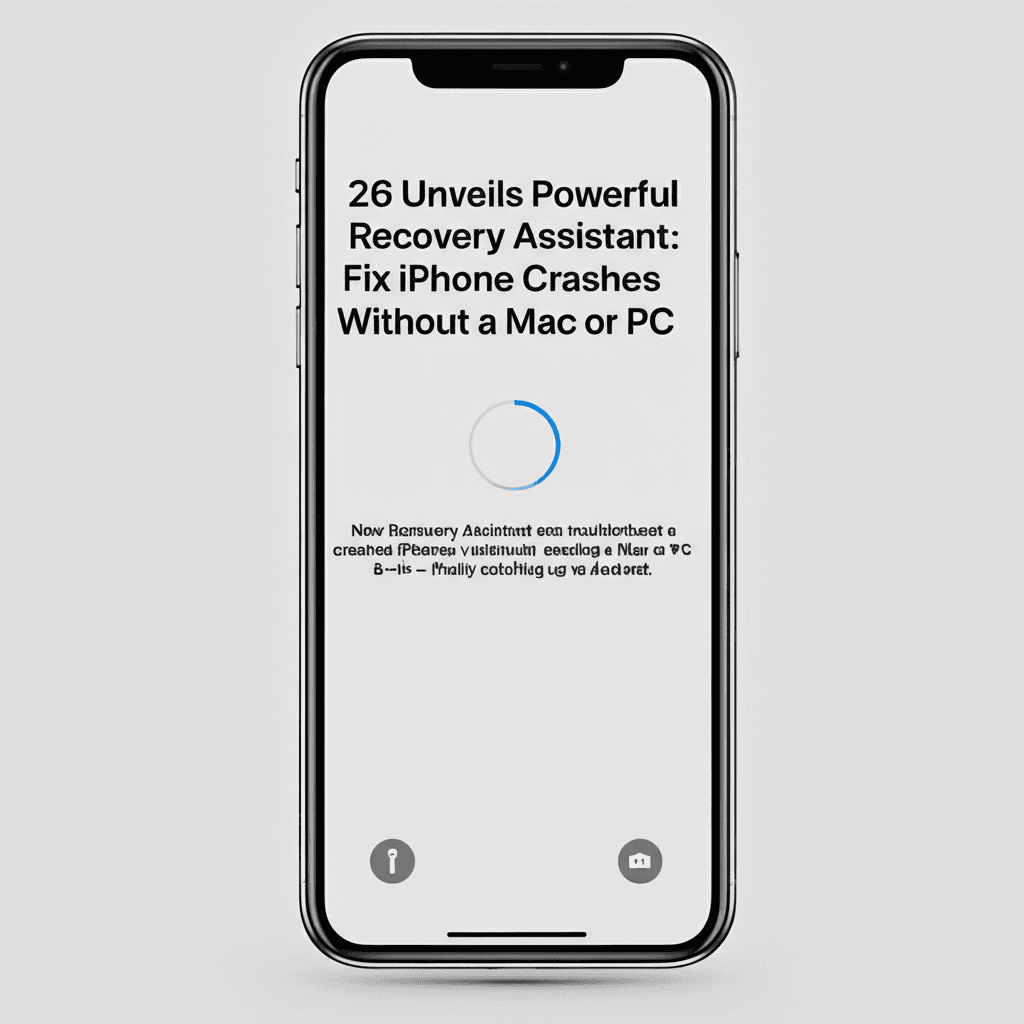In a significant update, iOS 26 introduces the innovative Recovery Assistant feature, a game-changer for iPhone users. This new tool allows users to troubleshoot and resolve common iPhone crashes directly on the device, eliminating the need for external computers. Many users have long relied on Mac or PC for such tasks, often facing inconveniences when their devices fail. Now, with iOS 26, Apple is closing this gap, aligning with Android’s capabilities in this regard.
The Recovery Assistant is designed to address critical issues like unexpected shutdowns, frozen screens, and software conflicts. It operates seamlessly within the iPhone’s operating system, guiding users through a step-by-step process. For instance, when your iPhone crashes, you can access the Recovery Assistant via a dedicated option in Settings. The system will then perform diagnostics, suggest fixes, and even attempt data recovery. In severe cases, it may initiate a safe mode reboot to isolate problems, making it an invaluable resource for both everyday users and those less tech-savvy.
This feature is a testament to Apple’s commitment to user independence. Previously, resolving iPhone crashes required Apple Store visits or computer connections, which could be time-consuming and costly. With iOS 26, users can handle common issues at home, reducing dependency on third-party tools. Imagine your iPhone freezes due to a software update; instead of rushing to a repair shop, you can use the Recovery Assistant to diagnose and fix it in minutes. This not only saves time but also empowers users to take control of their devices.
Comparing iOS 26 to competitors, Android has long offered built-in recovery options, such as Google’s Factory Reset or system updates. Apple’s late entry is strategic, aiming to bridge the user experience gap. While Android’s methods can be less intuitive, iOS 26’s Recovery Assistant is polished and integrated, reflecting Apple’s ecosystem strengths. This update is a win for privacy and convenience, as it minimizes the need to sync with external devices, which could expose data vulnerabilities.
Beyond the obvious benefits, the Recovery Assistant handles a range of scenarios, from minor glitches to major software malfunctions. It can recover lost data without factory resets, a feature often lacking in older iOS versions. Users can expect detailed reports on the fixes applied, enhancing transparency. This level of automation is particularly useful when traveling or in emergency situations where immediate action is crucial.
In summary, iOS 26’s Recovery Assistant is a standout addition that simplifies iPhone maintenance. Apple has delivered a feature users have been waiting for, offering relief when things go wrong. As part of ongoing iOS enhancements, this update positions Apple as more user-friendly, potentially boosting device loyalty. With this tool, fixing crashes has never been easier, and it might just be the feature that gets your iPhone back on track after a hiccup.

Leave a Reply